
How To Build Trust In A Relationship
By Darrell Provinse, MA, LPC, NCC, Executive Director
I don’t believe that you can live for very long on this planet without realizing that the fairy tale ideal of “Happily Ever After” is just that — a fairy tale. Broken people, in a fallen world, hurt each other, sometimes in big ways, sometimes in small ways. Sometimes, we relive or carry around past wounds from other relationships and import them into the present. Whatever the cause, I think most people, by the time they reach adulthood, have experienced a betrayal of trust, and struggle with how to appropriately allow themselves to be vulnerable in a relationship without feeling that they are overexposed. Many people live in fear of their trust being violated, while still others carry around the wounds of broken trust that remain unresolved and unhealed. With this in mind, it seems appropriate to discuss how relationships can be repaired and trust can be rebuilt. It is not always desirable, or practical, to end a relationship at the first sign of damage. Certainly, that can be an impulse; when trust has been broken, it might seem safer to end the relationship and move on, but invariably, we will also encounter trust issues in the next relationship that we form.
When do we trust? How do we trust? How do we know that it’s safe to trust? And how do we afford trust in proportion to someone’s trustworthiness? Several years ago, in response to the quandary that frequently was presented in therapy, I developed the acronym “T-R-U-S-T-I-N-G.” I’ve employed this in the therapeutic setting on many occasions to deal with, or to help address, issues pertaining to misuse of finance, infidelity, breach of confidentiality, and other issues of broken trust within a relationship. It is important to have a standard by which we can assess the degree to which an individual is trustworthy, and thereby decide if it is healthy to continue in that relationship.
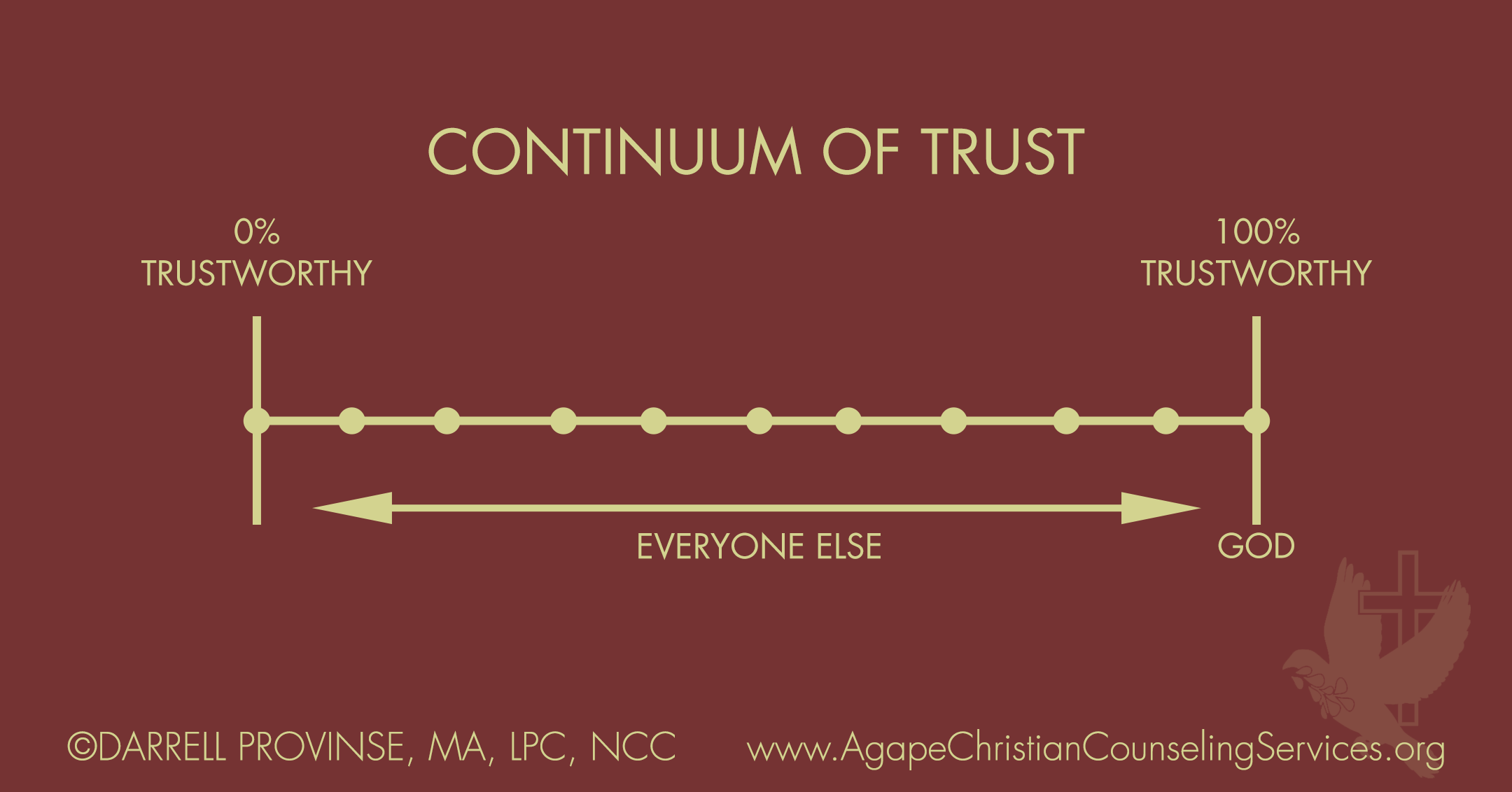
It is important to understand and accept the premise that no one is one hundred percent trustworthy, with the exception of God. Everyone else falls on a continuum. We all, on an unconscious level, attribute degrees of trustworthiness in everyday life. When we go to get on an elevator, we take in data, sometimes without consciously thinking about it. If there are loud noises, or the elevator looks in disrepair, we mentally begin to make an assessment whether or not the elevator is sufficiently trustworthy. In similar fashion, when someone approaches us, or someone makes a sales pitch, we take into account their demeanor, their eye contact, their level of credibility based on their degrees or experience, or our past history with them, etc. We ask ourselves, do they have an agenda? An example of this would be when we watch the news. Whether we are watching CNN or Fox News, most of us mentally make an assessment of whether there is a biased or agenda. Even though both propose to be telling objective truth, it comes from a very specific point of view/world view, and so, most of us will mentally make an adjustment in the level of credibility that we attribute to them, based on whether or not we trust their world view. It is therefore, very natural and appropriate that in our primary relationships, we do the same.
In assessing for trustworthiness, we should recognize that the continuum of trust should be fluid and flexible. If people behave in a way that is trustworthy, we allow them to move by degrees along the continuum, affording them a little bit more trust, based on our interactions and their history. If people damage or violate that trust, our goal should be that we move them back in a proportionate way. A small violation should result in an incremental reduction in the amount of trust that we would afford them, rather than completely shutting down, or fleeing the relationship. Obviously, the greater damage, where the more often the trust is violated, the more work there will be in repairing that trust and moving them in a positive direction.
The TRUSTING Acronym:
The following is an acronym that gives a basis for how people can collaborate to rebuild trust by the person who damaged the trust engaging in positive behaviors, and the person whose trust is damaged being willing to look for, not only signs of the negative, which is driven of course by pain and fear, but also looking for signs of the positive. In all circumstances, progress can be measured, both positively and negatively, in terms of frequency, duration, and intensity. So the greater frequency of trustworthy behaviors, and the more pronounced they are, the more they would move along the continuum. The less frequent and less pronounced the negative behaviors, the more safe a person can feel in ascribing greater trust.
The acronym may not be comprehensive in terms of ways to build trust but it does provide a good and fairly complete guideline as to what would create an environment, such that trust could be built — and especially rebuilt after significant damage has occurred.
T is for Truth
The first “T,” for truth, means more than just telling the truth about a single incident. It’s actually creating an atmosphere of truth and not being evasive, manipulating facts, or withholding necessary and 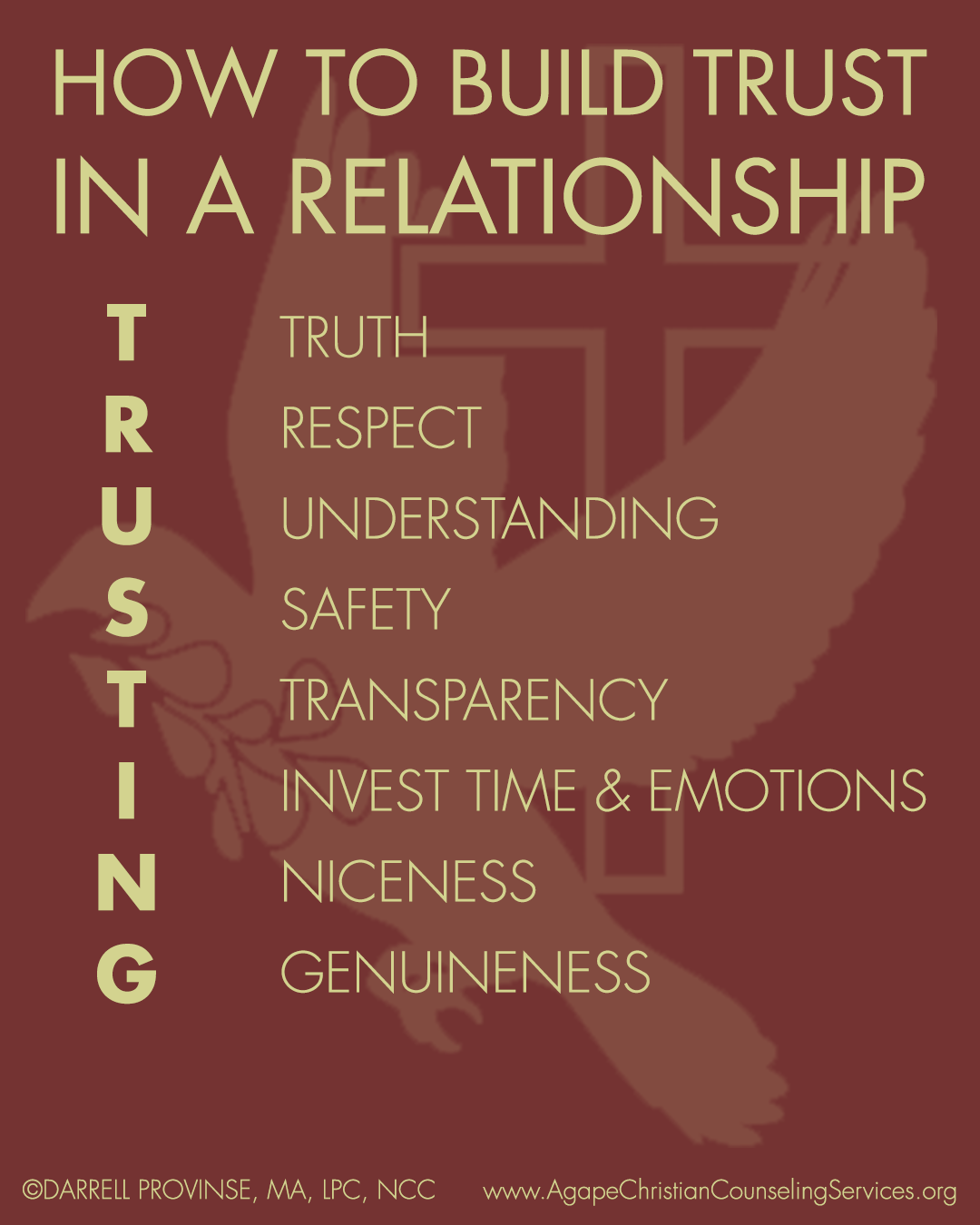 appropriate information. It refers, not only to the big things, but the small things.
appropriate information. It refers, not only to the big things, but the small things.
For those who have had trust damage, even when someone equivocates on small matters, it is often perceived as a signal that that person is untrustworthy and not concerned with the truth. Worse, it may be that if that person is overheard lying to someone else (i.e. calling in sick to work when they’re not really sick, offering an excuse to get out of an invitation, etc.), then the person overhearing it is likely to think that if someone can so easily and convincingly lie to others, why would I believe that they couldn’t as easily and convincingly lie to me. Therefore, truth in this circumstance, is to be pervasive and applied to all situations.
Telling the truth, however, does not mean telling everything you know. When we withhold information that should be someone else’s, that is keeping a secret that can often be toxic. On the other hand, there is such a thing as privacy or confidentiality, and there are some things, or some information, that can reasonably be considered private. Telling the truth does not mean that we have to tell those things that are truly and legitimately our proprietary information, which should be regarded as private.
R is for Respect
Similarly, the “R” for respect, represents more than something that just happens occasionally. It’s creating an atmosphere that shows consideration and deference to another person. In this way, the person who is questioning whether and how much they can trust someone is, over time, able to experience and receive care from another person. By showing respect, it shows that we care about that person and their feelings, and that we value them, therefore transmitting that we would not want to do them harm or to demean them by giving them false information.
U is for Understanding
The “U” for understanding, again, requires a greater amount of effort on the person seeking to build or rebuild trust. Understanding includes things such as empathy and taking time to understand the other person’s feelings. It also includes taking the time to understand their perspective. By doing that, we’re putting ourselves in their space a little bit more and when someone is not viewed as other, it is much harder for us to lie to them or to manipulate them. To have true understanding, therefore, shows concerted effort and requires that the individuals in question view each other in a different way.
S is for Safety
Safety, of course, can include the physical but safety would also include the emotional, social, etc. Safety means having confidence that I can trust you not to snoop into my things or read a journal that is truly private. Safety means knowing that I can share information with you and not worry that you will tell someone else, which of course would be a breach of trust, or use it against me in an argument. If someone exploits our weaknesses, our flaws, or information that we have shared that makes us vulnerable, and that of course, breaks trust in a significant and often profound way that also sends a message that if I can’t trust you in that way, I probably can’t trust you in other ways as well.
T is for Transparency
The second “T” in the acronym is for transparency, which simply means that we do not hide things. There is a saying that people with nothing to hide, hide nothing. If, however, we withhold information, particularly after we have done something to damage trust, even if that information under other circumstances would be considered private, we then create an atmosphere of mistrust by being secretive. If trust has been significantly damaged, then it demands that the standards and boundaries of what is truly private should be revisited. In cases of deception or even infidelity, be it emotional or physical, etc., there is a greater need for complete transparency, which may include access to bank statements, wallet, purse, billfold, email and Facebook passwords, etc. The goal is not that the other person becomes the policeman, the principal, or the parent. Nor is it the goal that this would continue to that degree indefinitely, but until there is significant movement down that continuum of trust, it makes sense that greater efforts must be made to be an open book. Transparency, therefore, is something that is done voluntarily and may be viewed as an opportunity to demonstrate a commitment to rebuilding trust and doing something in a different way than has been done in the past.
I is for Invest
“Invest” may include the financial. It may mean that there are ways that we can demonstrate our care for somebody by seeking to address their material means. It does, however, go well beyond that. It means that we invest our time and our emotions in understanding that person, in being present with that person, in transmitting as a result of that presence, and by that quality time spent, that that person is a priority in our lives and we care for them.
N is for Nice
“Nice”, in this case, is meant to include things such as love, gentleness, kindness, patience, meekness, self-control, a soft answer, and those things which demonstrate the presence of the Holy Spirit in us. Again, like trust and the other things listed above, it is not meant to be episodic but is meant to be a mindset and a lifestyle. If we truly care about someone, then we want to exhibit those qualities and set that tone for the relationship.
G is for Genuineness
This means simply that you should say what you mean and mean what you say. There are times in context and in relationship where the use of Socratic irony or non-derogatory sarcasm may be understood, but very often it sends mixed messages. Saying that something is okay when it’s not really okay sends a mixed message. Saying that we’re fine when we’re clearly not fine sends a mixed message. Saying something that has a little hook or barb at the end of it in sarcasm may be confusing rather than elucidating. If there is any confusion as to intent or meaning, then it is primarily incumbent on the person who is seeking to rebuild the trust to clarify and make sure that what they’re communicating is clear and genuine.
By allowing individuals to move freely along the continuum, it allows the relationship to be fluid and dynamic. Dynamism allows for growth. Static often becomes stagnant and leads to death. If we are too rigid in our ability to trust, the relationship will die. If we do not have a somewhat objective basis for affording trust, then we open ourselves up to either terror and/or disappointment. The best way to repair a damaged relationship, is if both parties collaborate to evidence trustworthy behaviors and to actively rebuild the trust by moving along the continuum as demonstrated in action.
 About the Author
About the Author
Darrell Provinse, LPC, is the Executive Director and CEO at Agape Christian Counseling Services. He is a Licensed Professional Counselor in the state of Missouri. He is certified in Gestalt Therapy as well as Cognitive Behavioral Therapy and extensively trained in Logotherapy and in family systems. Click on the picture to the left to read his complete bio.



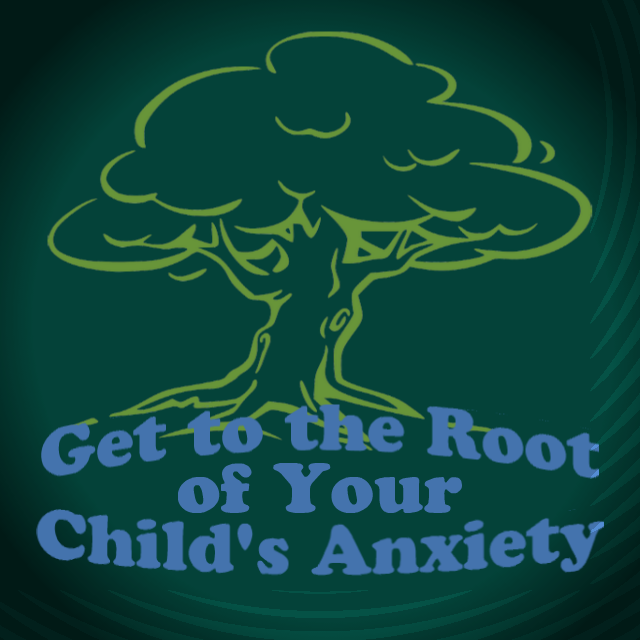
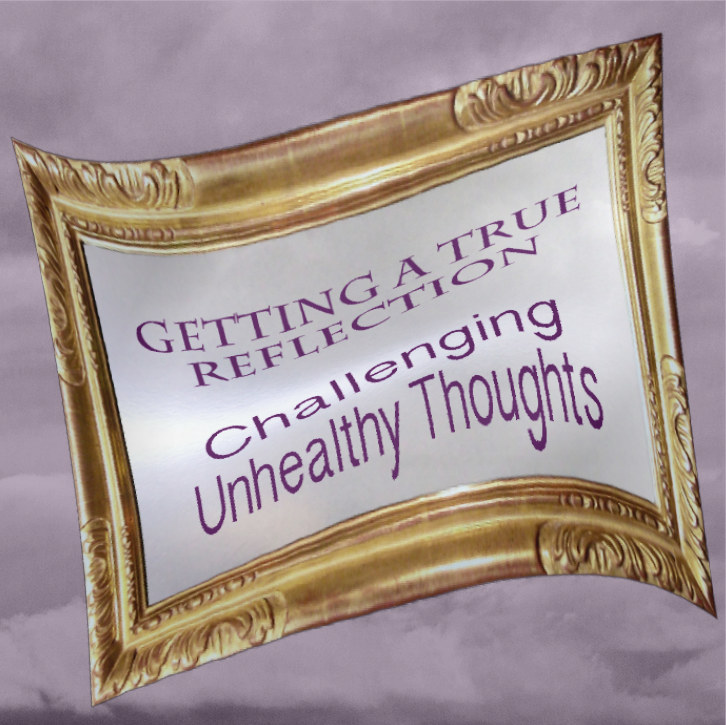
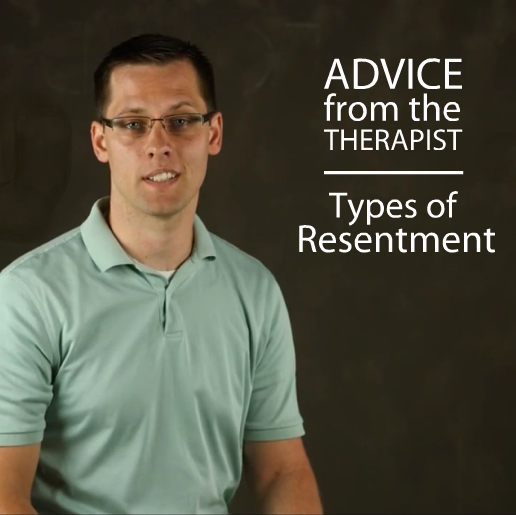
One Comment
Martin K
I am very thankful for this resource and would appreciate to receive more whenever possible.